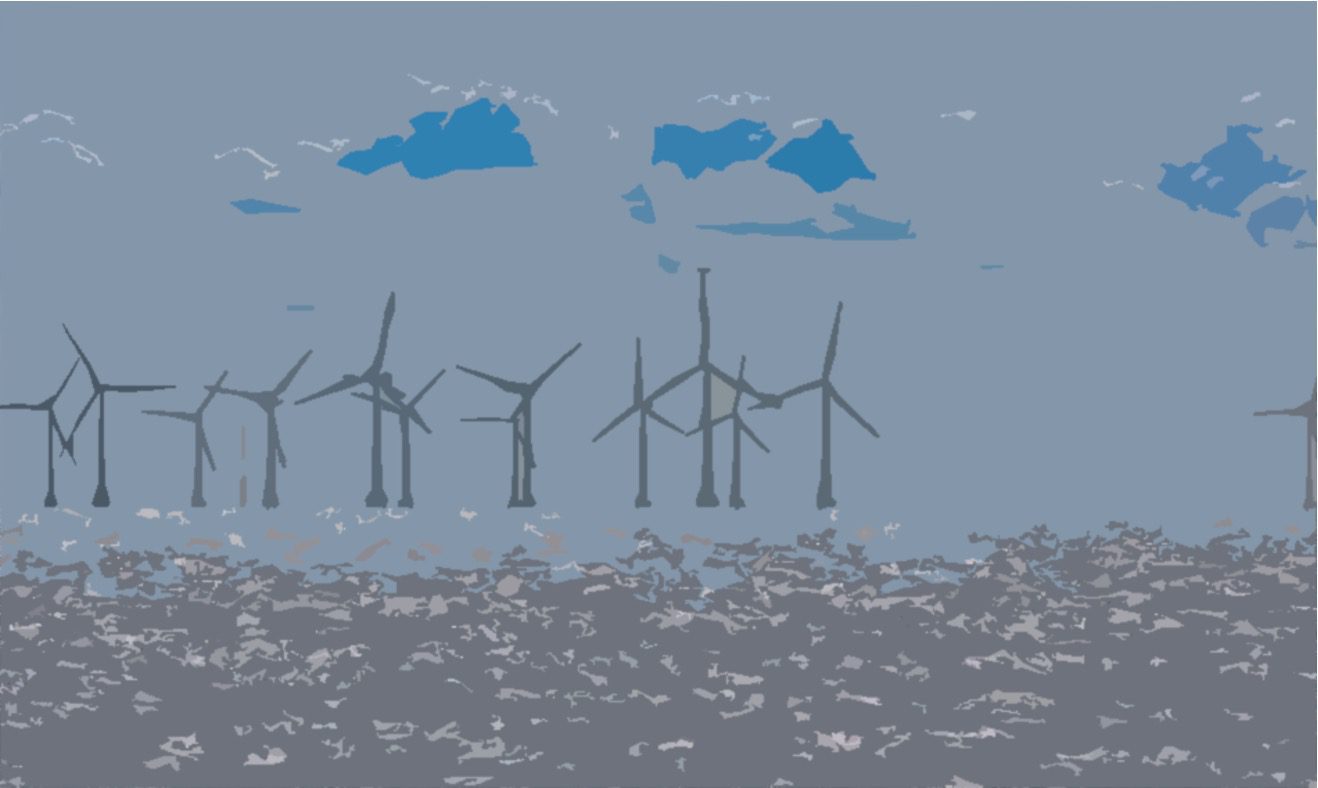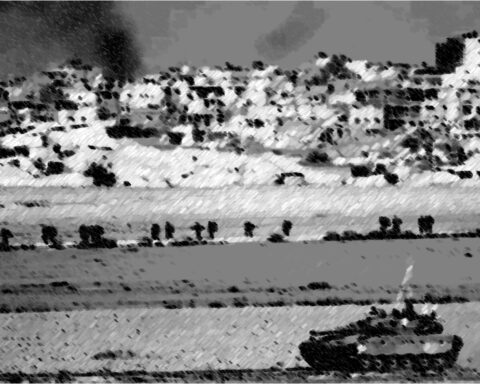I decided to write this article after the United Nations Climate Change Conference (COP28). Climate Change is certainly an environmental issue. However, as far as I can see, this topic is related to the mandatory implementation of a major transformation with technological, economic, social, and political aspects. There will also be changes in geopolitical balances, with shifts in centers of gravity. We have already begun to receive signals of these changes. The transformation indicates a major period set according to the schedule of a global revolution. In other words, this is a very important and comprehensive issue aimed at accelerating and concluding all global transformation projects required by the Fourth Industrial Revolution.
I will not elaborate on Climate Change, the Paris Agreement, or COP28 in detail, as this information can be found from various sources. I will only say this: with the decision taken at COP28, “we are at the beginning of the end of the fossil fuel era!” This was stated by UN Climate Change Executive Secretary Simon Stiell in his closing speech in Dubai. In other words, this transformation means that clean energy will now be used instead of fossil energy. After a certain period, we will be talking about zero emissions. What does this mean? Everything that produces and operates on fossil fuels will be transformed, and everything related to new energy plants will be redesigned, systematized, and used…
THREE TOPICS TO EXAMINE
First topic: The connection between Industrial Revolutions and the issue of Climate Change.
This includes the industrialization and environmental degradation that have been increasing since the First Industrial Revolution (1784), the Fourth Industrial Revolution (2017), the closely related Paris Agreement (2015), COP28 (2013), and the 2050 target set there (to get rid of fossil fuels). Had it not been determined during this period that it was necessary to get rid of fossil fuels, there would have been an acceptance of scientific explanations of future uncontrolled environmental disasters. This is a more significant risk factor than anything else. To achieve the goals of the Paris Agreement, it is the last chance and also a plan to gradually get rid of fossil fuels, which are the main cause of environmental pollution, to reach an acceptable risk limit.
Second topic: Global economic growth, the trend of capital movements, and the risk taken by investors.
Let’s look at the totals of Global Gross Domestic Product. In 1986, the total GDP was 41.6 trillion US dollars. It has increased exponentially since then. For example, at the start of the Cold War (1947), the total GDP was 9 trillion dollars. Similarly, it is not surprising that the total GDP reached 87 trillion dollars in 2008, which we mark as the Global Economic Crisis. Because the Third Industrial Revolution (1969-2017) was completed, and the conditions for the Fourth Industrial Revolution were reached. Before the start of the Fourth Industrial Revolution, in 2015, the fact that the total global GDP exceeded 100 trillion dollars and continued at this momentum makes us ask questions: For example, will the total GDP exceed 200 trillion dollars in the 2050s? Does this mean more environmental pollution? This indicates a situation that makes those who act with financial risk compare it with the risk of Climate Change.
Third topic: Geopolitics and Spacepolitics.
This article mainly examines geopolitical changes. Can we draw such a line from now on? The “geopolitical” issues we focused on until the COP28 period will present new understandings parallel to the developments we will see from now on. Similarly, let’s see, in the period until the 2050 target, parallel to the innovations in geopolitics, there will be another new concept that we need to mention, which will be called “spacepolitics”. I will discuss this new concept a little. Because this new concept will help us understand the changing face of geopolitics and the developments in the economy due to growth, while simultaneously developing our perspectives on how economic growth can be achieved with the returns from space.
This article refers to the developments between 2023 and 2050 as the “transformation” period.
UNDERSTANDING THE RISK MOVEMENTS OF CAPITAL
Will this transformation create a global movement of capital and will it affect economic growth? In the last quarter-century, countries like the USA, China, South Korea, Japan, the UK, Germany, France, and certain companies with global potential, have been in the process of developing clean energy production and storage systems, various tools and equipment, and technological consumer goods, and have now ensured that these are available in the markets alongside conventional alternatives. In countries like Singapore, Taiwan, and Vietnam, vital intermediate goods production was carried out as a complement to this process. Petro-states like the United Arab Emirates and Saudi Arabia anticipated the transformation and acted accordingly, ensuring their countries became financial movement hubs. These preparations and the transition period became a stage for capital positioning, financing new R&D, and accelerating necessary investments. The gains of this potential will be fully reaped when the goals are fully achieved and the transformation is fully realized, and the revenues for those who have invested will be found accordingly.
Will life become cheaper? There might be those who think this way, wind, sun, water are free, why so much money is paid for energy. The answer is simple, we pay the interest of capital and the cost of technology for the conveniences of each era.
A wind turbine has its own global market, relationships defined by international agreements, a bill reflected to the final consumer for electricity, a working model between the state and the final consumer chain related to energy supply, working methods of global investment banks and local and regional banks providing credit, and movement patterns of global, regional, and local financial systems.
Capital is always in motion and is presented as a risk management topic. There is a competition within capital itself to grow, and understanding its natural state is essential. Thus, you can face the reality that wind is not free locally. When you look from the main points where capital is accumulated, again, the competition among large capital groups to earn more is in question.
What I want to emphasize here is clear, you cannot get wind for free, and the global system cycle is concerned with the decisions of capital owners at the head of such businesses to risk or not risk their power. It turns out that the real decision-makers of the global energy transformation are the capital owners. These major decisions are reflected in policies through governments and political leaders. Even if you cannot fully choose what you vote for locally, the reflection is in this form.
The Fourth Industrial Revolution (according to common view) started in 2017. A revolutionary decision was made at COP28 in Dubai in December 2023. This was necessary. Because governments and capital owners should have thought: Firstly, if we do not make this decision, there will be no world left to make other decisions, so this is a risk calculation. Sustainability is the main issue. The second point, if the investments (risks taken) made so far in the transformation are to be fully turned into profit, now is the time, because the balances seem to have settled.
These two main risk calculations are sufficient to make a schedule when making global decisions. This transformation will affect geopolitical weights. Because energy, production, consumption, logistics, and the gradual capital movements related to all of them will determine their geopolitical routes.
UNDERSTANDING TECHNOLOGICAL DEVELOPMENTS
Here, capital will not just settle in one place. This point also needs attention. COP28 showed some gaps. Investments in electrically powered machines and vehicles have been made, or at least their cornerstones have been laid. But is this satisfactory? Up to this point, the necessary potential has been shown, and a satisfactory signal has been given to risk-takers about the transformation. But this is not what I’m talking about. Investment in R&D will not stop, and the strategy of creating global pressure in this area will continue.
Thus, new risks should be taken. What might these be? It can be said that some projects, whose visions are ready and named, are being worked on, even if they are not shared with the public. Looking at the progress in the lane opened by the Fourth Industrial Revolution, revolutionary works in areas such as Artificial Intelligence, Quantum Computing, and Cloud Technologies continue. These are developments that will lay the foundation for all other work. They proceed along the path of risk calculations. What else can be said? There are studies on innovations and efficiency in energy production with fusion, nuclear, and hydrogen methods. Risks related to these are also being taken.
Meanwhile, remember that Bill Gates holds the potential for a new technology nuclear plant that operates without waste, although it has not yet been implemented due to political reasons.
All these are related to Climate Change in that motivation and determination are understood. Risk-takers have crossed a threshold where they will not hesitate to lean into these new risk areas. If you think about how these new risk areas will affect geopolitical balances, then the networks between the new points where capital movements will settle in the period corresponding to the schedule set from December 2023 to 2050, which began with the global activation of capital up to the Fourth Industrial Revolution, show us a new global picture.
UNDERSTANDING GEOPOLITICAL INNOVATIONS
What is the pressing or challenging issue? The world is developing all its R&D capacity on existing elements. But will there be newer elements? Some of us may not know, but it was possible to reach a capacity increase in current advanced technology with new opportunities called rare earth elements (REEs), critical minerals (CMs), or critical raw materials (CRMs). Rare earth elements (critical minerals/raw materials) play a significant role in the Fourth Industrial Revolution. From this perspective, some countries have already gained geopolitical advantages.
Let’s list the countries that stand out in terms of rare earth elements (by share in world reserves): China (37.9%), Vietnam (18.9%), Brazil (18.1%), Russia (10.3%), India (5.9%), Australia (3.5%), USA (1.3%), Greenland (1.3%), Canada (0.7%), Tanzania (0.7%), South Africa (0.6%), other countries (0.7%).
China leads these advantaged countries. China created great opportunities for itself both with the elements and with the new products produced with them (at least semiconductors should be mentioned here). China’s technology and capacity, spreading globally from the Indo-Pacific and Arctic regions, triggered changes that need to be focused on from a geopolitical perspective.
The countries of the Pacific and Indo-Pacific, such as China, Japan, South Korea, Taiwan, Singapore, Vietnam, Australia, and on the other side, the United States and Canada, have formed the front of the new geopolitics. European countries wanting to use their own and their partners’ strength to reach here, especially the UK, Germany, France, have revealed the reality that they want to use every opportunity. From this aspect, the Northern European axis developed as an opportunity that Europe could use in terms of trade routes.
From south to north in the Atlantic and then eastward, the Brazil, USA, Canada, Greenland, and UK axis with the Arctic region connection, passing through the Scandinavian line to Russia and China, and reaching the Pacific, will enhance its importance.
The Indo-Pacific line is also very prominent. Starting from China, the line from the South China Sea, which includes Vietnam and Australia, to India is critically important. From the Indian subcontinent, there are two separate routes, one through the Middle East and Africa. These are transportation networks valid since the classical period and have increased in importance parallel to developments.
From a geopolitical perspective, especially as seen during the Covid-19 period, the fluidity of logistics lines and their intersections is important. In this regard, the routes, channels, and ports of sea traffic and their security are still within the known framework. The most important issue to focus on is the waterway in the Arctic region.
UNDERSTANDING THE ISSUE OF SPACEPOLITICS
Another topic is activities in space. Three points can be highlighted: First, the internet network. Second, movements and threats in cyberspace. Third, all these operating and control centers on the ground.
The United States and China are making the most effort on space-based internet infrastructure. Meanwhile, the most globally prominent company is SpaceX.
There are countries that have established Space and Cyber Commands. The most talked about are the USA and the UK. Besides, even if they don’t use these names, China and Russia also have organs working for these purposes functionally.
Therefore, it is clear that the efforts to increase space traffic are not in vain. Some global companies took the lead and created new capacity in space and ground stations, and their funding in terms of capital has been fully ensured so far. What could change now? Once the energy transformation occurs and new R&D capacity increases, we will see rapidly developing innovations. The advantages at points that have invested in these areas until today are an undeniable source of gain, and there will be opportunities for advancement on this.
In defense, balances have shifted to innovations. Planets evolved to go higher and towards networked operating systems. Network-connected ships are being moved to crisis areas faster and more effectively. Satellites operate in networks. Detail in the view from the ground has increased. Anti-satellite systems (ASATs) have developed. The engines of ships, airplanes, and rockets have come to the fore in terms of speed, altitude, long-term use, low cost, and networked operation capabilities in energy transformations.
What can be brought from space to earth? Some countries and global companies have turned to allocate significant capital in this direction. Although no concrete information has been publicly disclosed yet, we need to think that there is an expectation of this critical risk being entered. Robotic systems, rockets, energy transformations as a whole have become suitable for opening stations on the Moon or an asteroid. The fact that this material return could generate an expectation that could redo all known calculations is enough to keep in mind.
Which countries are in the field of space-politics? The USA, European Space Agency, Russia, China, France, India, Japan. In addition, some countries have started their work in this area. However, global companies that have become prominent with globalization and the Fourth Industrial Revolution are also taking the lead. Let’s remember a few: SpaceX, Virgin, Blue Origin.
CONCLUSION
Climate Change, Global Warming, or Environmental Disaster, whatever we call it, we are at a threshold where humanity has to make a decision about our planet and act according to that decision. Maybe we are even late! My view is this: The global economic condition and the Fourth Industrial Revolution together concretized some developments and provided motivation, thus the decision could be made in this way. As a first result, I can state this. The second conclusion I draw is that Climate Change has brought forth geopolitical and spacepolitical fields. From now on, countries and global powers will take further steps using the conveniences of new technologies both globally and in space. At the same time, this situation will cause changes in the positions and weights of countries and some powers. For those who are late in doing what globalization and the Industrial Revolution have brought, there will be a backward position in power balances, while for those who do it on time, there will be an advanced position. The situations of countries and powers that run after opportunism but stay away from science and technology will always be subject to the will of others. Revolutions, transformations, and critical times in history, as seen, produce such significant results.





